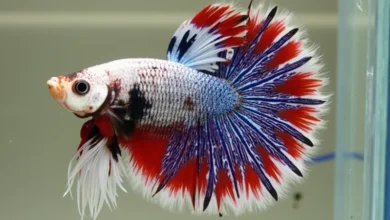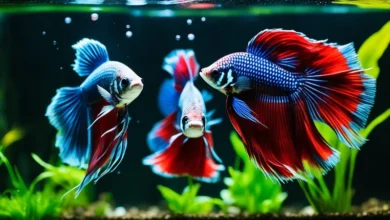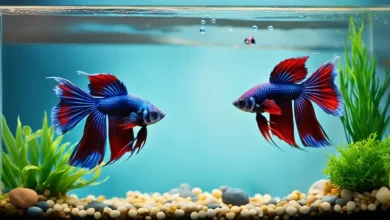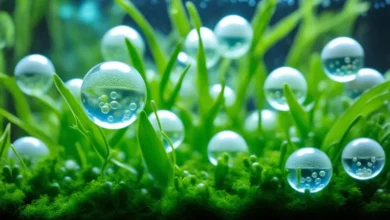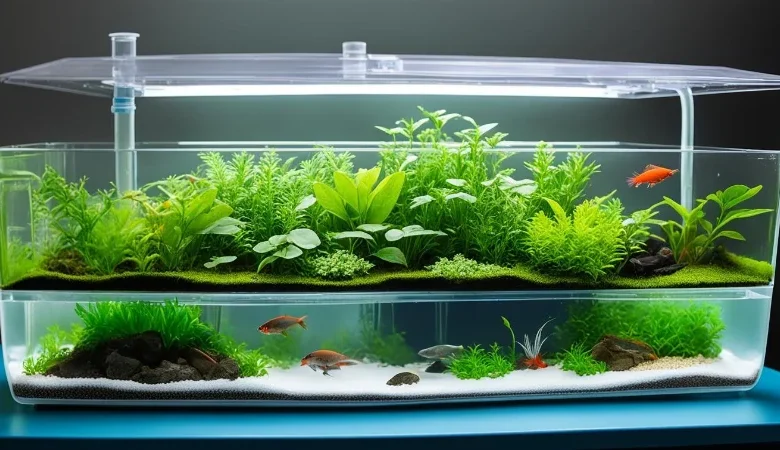
Are you considering breeding betta fish? Or perhaps you’re already a seasoned betta fish breeder looking to up your game? Either way, one thing is for certain – having the right betta fish breeding supplies is crucial to your success. Breeding betta fish is both an art and a science, requiring careful planning, knowledge, and the right equipment.
In this article, we’ll explore the essential betta fish breeding supplies that every breeder should have in their arsenal. From breeding tanks to water conditioners, we’ll cover everything you need to ensure a successful and stress-free breeding process for your beloved bettas. So, let’s dive in and discover the key supplies needed for a thriving betta fish breeding journey!
1. List of basic Betta Fish Breeding Supplies
To ensure successful betta fish breeding, it’s crucial to have the right equipment and supplies. Here is a comprehensive list of essential items you’ll need:
- A 10-gallon breeding tank: A separate tank specifically designed for breeding.
- 5-gallon tanks for the adult breeding pair: Provide individual spaces for the male and female.
- A 30+ gallon fry rearing tank: This larger tank will accommodate the growing fry.
- A sponge filter: Helps maintain water filtration without posing a threat to small fry.
- An air pump with airline tubing and an air regulator: Ensures proper aeration in the tanks.
- A heater: Keeps the water temperature stable, usually set to 80°F for breeding.
- A breeder net: Separates the female from the male to prevent aggression and stress.
- Indian almond leaves and Java moss: Promote water quality and provide hiding spots for fry.
- A microworm culture: Serves as food for the newly hatched fry.
- Oatmeal and active dry yeast: Required for the maintenance of the microworm culture.
- Brine shrimp eggs and hatchery: Important as a food source for the fry after hatching.
- Jars and containers: Used to house aggressive male fry separately.
- Appropriate betta food for adults and fry: Ensures a balanced diet for all stages of development.
- A fish net: Essential for handling the fish with care during breeding.
- Biological conditioner and water conditioner: Maintains optimal water quality for the breeding environment.
- Aquarium salt: Helps prevent diseases and maintains the health of the fish.
- A suitable betta pair: Select a healthy male and female with desirable traits.
- A turkey baster: Useful for feeding and cleaning the tanks.
- Patience and responsibility: Vital qualities throughout the betta breeding process.
Having these essential items in your betta breeding setup will greatly increase your chances of success. Remember to provide a comfortable and stress-free environment, monitor water parameters regularly, and be prepared for the responsibilities of caring for the breeding pair and their fry.
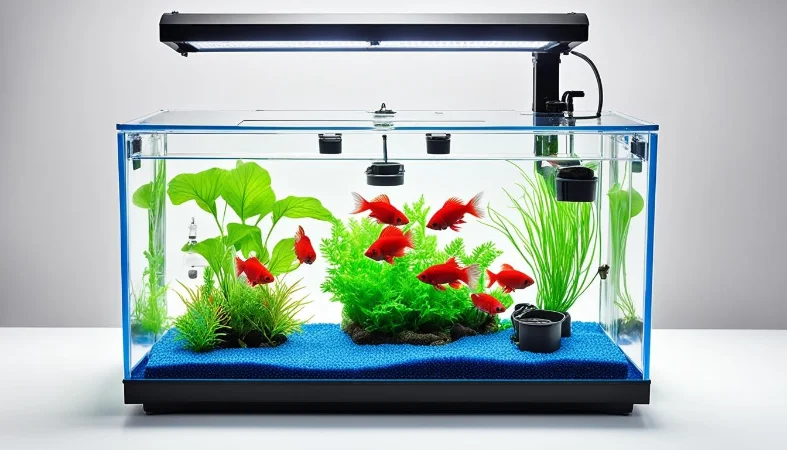
2. Day 1: Selecting and Conditioning the Pair
To begin the betta fish breeding process, it is crucial to select a healthy and young breeding pair. Look for active fish without any signs of disease, ensuring they possess desirable color, fin shape, and genes. It is important to note that the female betta should be slightly smaller than the male betta.
Once you have carefully chosen the breeding pair, the next step is to condition them for successful reproduction. This involves providing them with proper nutrition and regular water changes for at least 10 days before the actual breeding takes place. Conditioning the pair ensures they are in the best physical and reproductive health, increasing the chances of a successful breeding process.
During this conditioning period, it is recommended to provide a balanced diet consisting of high-quality pellets, live or frozen food such as bloodworms, daphnia, and brine shrimp. These nutrient-rich foods aid in developing the bettas’ reproductive systems and overall well-being.
Additionally, maintaining an optimal water quality through regular water changes is essential. Ensure the water parameters, such as temperature (around 80°F) and pH, are within the preferred range for bettas. Using a water conditioner specifically designed for bettas can also help remove harmful chemicals and promote a suitable environment for breeding.
3. Day 1: Breeding Tank Setup
Before beginning the betta fish breeding process, it’s crucial to set up a proper breeding tank. Follow these steps to ensure an optimal environment for your breeding pair:
- Clean and rinse a 10-gallon tank without any substrate. This provides a spacious and clean area for the breeders.
- Install a sponge filter for effective water filtration. The sponge filter helps to maintain water quality and ensures proper oxygenation for the fish.
- Place a heater in the tank to maintain the right temperature for breeding, which should be around 80°F (27°C).
- Add conditioned water to the tank. Use a reliable biological conditioner to remove harmful chemicals from tap water, ensuring a safe and favorable environment for the breeders.
- Incorporate aquarium salt into the water to help prevent diseases and promote overall health in the breeding pair.
- Include Indian almond leaves to create a natural environment and provide beneficial properties for the fish.
- Prepare the tank for the male betta to build its bubble nest by providing a breeder nest, java moss, and an almond leaf. These materials create suitable conditions for the male’s nesting behavior.
- Turn on all electrical equipment, including the sponge filter and heater, and adjust the air regulator for a gentle flow.
With the breeding tank appropriately set up, you have created a comfortable and conducive environment for your betta fish to begin their breeding journey. The next step is conditioning the breeding pair and preparing for successful breeding.
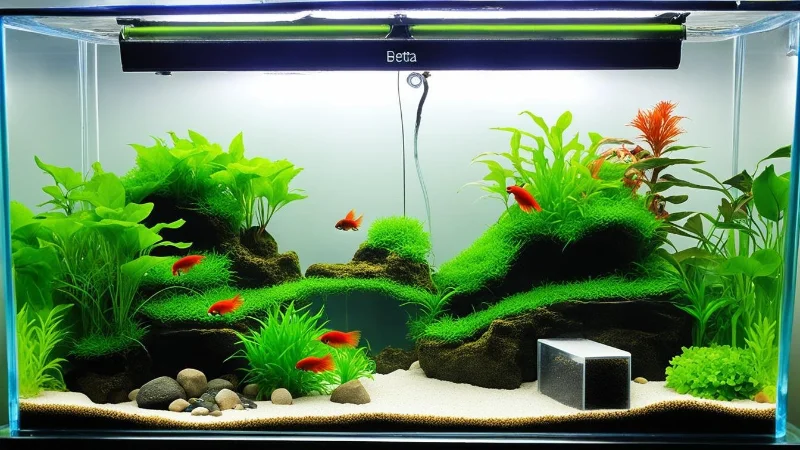
Day 1: Microworm Culture
On the first day of the betta fish breeding process, it’s essential to start the microworm culture to provide fry food. Microworms are a popular and nutritious option for feeding newborn betta fry, thanks to their small size and constant movement.
To start your microworm culture, you’ll need a container with cooked oatmeal and active dry yeast. Mix in the microworm culture into this mixture and let it ferment. The oatmeal provides a nutritious base for the culture, while the active dry yeast acts as a catalyst for growth and reproduction.
Remember to stir the microworm culture weekly to keep it alive and thriving. This regular stirring helps distribute oxygen and prevent the culture from compacting and becoming stagnant. Maintaining a healthy microworm culture ensures a constant food source for the newly-hatched betta fry.
By starting a microworm culture on the first day of the breeding process, you’re ensuring a steady supply of tiny and nutritious food for the growing fry. This will contribute to their overall health and development during the early stages of their lives.
Day 10: Adding the Pair to the Breeding Tank
After 10 days of conditioning, it’s time to introduce the breeding pair to the breeding tank. This is an exciting step in the betta fish breeding process as it brings the male and female together to initiate the breeding behavior.
Start by adding the male betta fish to the breeding tank. This should be done before introducing the female. Give the male some time to explore and get comfortable in his new environment.
Next, place the female in a breeder net within the breeding tank. The breeder net serves two purposes – it protects the female from potential aggression from the male and allows them to interact and bond without physical contact.
It’s essential to acclimate the fish to their new surroundings to minimize stress. Maintain the water temperature, pH, and other water parameters in the breeding tank to match what the breeding pair has been conditioned in. This will help the fish adjust more easily and reduce the risk of shock.
Tip: To acclimate the fish, float the breeder net containing the female in the breeding tank for about 20-30 minutes. This allows the water inside the breeder net to gradually adjust to the tank water temperature. During this time, keep an eye on the male’s reaction and make sure he shows interest in the female.
If the male seems disinterested or aggressive, it may be a sign that they are not a compatible pair. In such cases, it’s best to separate the fish and try again with a different pair.
Once the male betta fish shows interest in the female, and they seem calm and at ease in each other’s presence, you can release the female from the breeder net into the breeding tank.
At this point, the breeding process should start to unfold, with the male betta fish taking on the responsibility of building a bubble nest and the female becoming receptive to his advances.
Remember to monitor the pair closely during this crucial stage. Observe their behavior, ensure their safety, and provide them with the necessary care and attention.
Adding the breeding pair to the breeding tank is an important milestone in the betta fish breeding journey. It sets the stage for the next steps in the process, such as the development of a bubble nest and the eventual release of the female’s eggs.
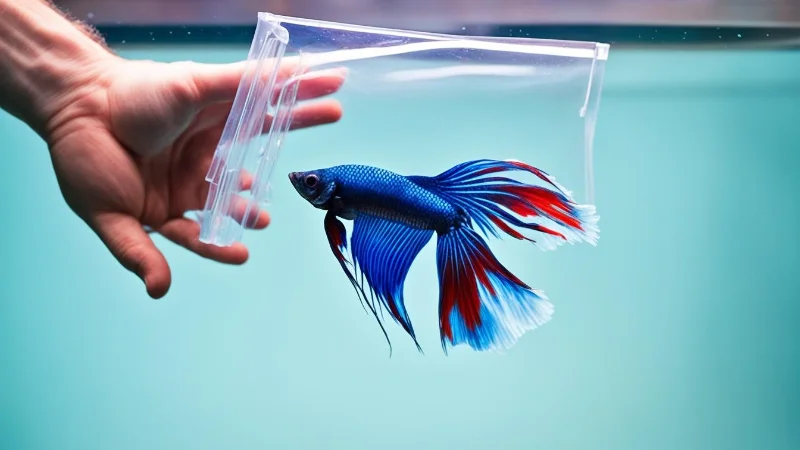
Stay tuned for the upcoming sections to learn more about the betta fish breeding process and the care needed for the eggs and fry.
Betta Fish Breeding Process
During the betta fish breeding process, the male betta fish will exhibit specific behaviors and actions to ensure successful reproduction. Here is an overview of the breeding process:
Male Builds a Bubble Nest
Once the male betta has acclimated to the breeding tank, he will start constructing a bubble nest at the water’s surface. This nest is created by the male blowing bubbles and sticking them together with a sticky secretion from his mouth. The purpose of the nest is to provide a safe place for the eggs to incubate away from potential predators.
Female Releases Eggs
When the female betta is ready to spawn, she will display receptive behavior and show vertical stripes on her body. This indicates that she is ready to release her eggs. The male will then entice the female to swim underneath the bubble nest, where she will release her eggs. The male will quickly fertilize the eggs by releasing his milt (sperm).
Male Takes Care of the Eggs
After the eggs are fertilized, the male betta fish assumes the responsibility of tending to the eggs. He will carefully retrieve any eggs that fall from the nest and gently place them back inside. It is crucial to remove any unfertilized eggs promptly to prevent them from rotting and polluting the water. The male will fan the eggs with his fins to ensure proper oxygenation and prevent fungal growth.
Fry Development
The eggs will hatch within 24-48 hours, and the newly hatched fry will cling to the bubble nest using their adhesive glands. The fry will feed on their attached yolk sacs initially, providing them with essential nutrients. As the fry develop, they will become free swimming and start exploring the tank.
Transition to Live Food
As the fry grow, they will require supplemental food to support their development. At this stage, they can be fed with live microworms or small brine shrimp. These tiny organisms provide the necessary nutrients for the fry’s growth and survival. Feeding should be frequent and in small quantities to prevent overfeeding and water pollution.
The betta fish breeding process is a fascinating natural behavior in which the male takes on the responsibility of nurturing the eggs and caring for the fry. It requires patience, proper setup, and a thorough understanding of the different stages of reproduction. By following the appropriate guidelines and providing the necessary care, you can successfully breed betta fish and enjoy the remarkable beauty of their offspring.
Conclusion
Successful betta breeding requires careful planning and adherence to essential steps. By selecting a healthy breeding pair, setting up the appropriate breeding tank, providing proper conditioning and nutrition, and exercising patience and responsibility, you can increase your chances of a successful breeding experience. Remember to gather all the necessary supplies and follow the guidelines outlined in this article to ensure the best outcomes for your betta fish breeding endeavors.
Betta fish breeding can be a rewarding and fascinating journey, but it also comes with its challenges. It is important to be prepared for the responsibilities that come with caring for the breeding pair and their fry. Regular monitoring of water parameters, providing suitable food, and addressing any health issues promptly are crucial for the well-being of both the adult fish and their offspring.
With the right knowledge and dedication, betta fish breeding can be a fulfilling and educational experience. Whether you are interested in preserving specific genetic traits, producing show-quality bettas, or simply expanding your knowledge of these magnificent fish, the process of breeding bettas can provide you with a unique insight into their behavior and life cycle.
